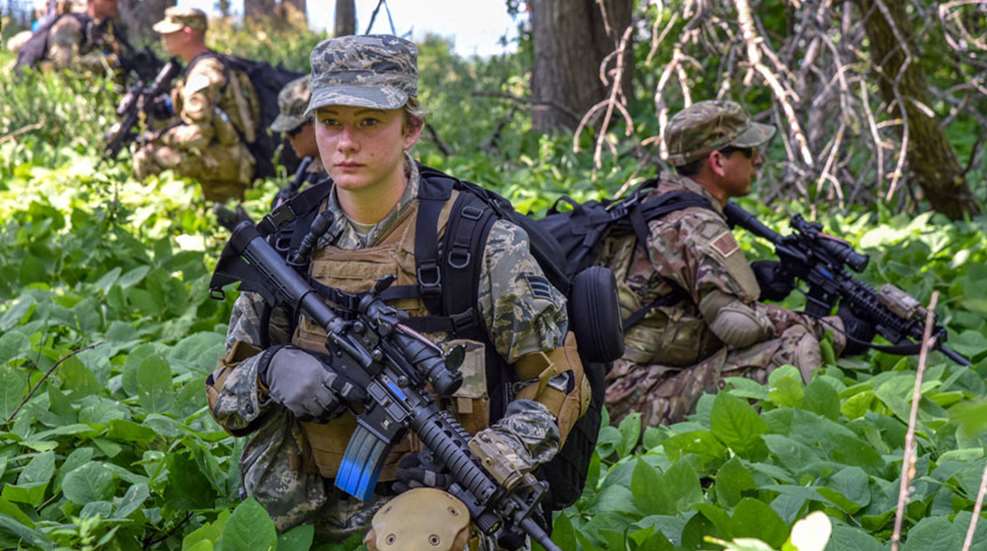
Without a doubt, most people get their defensive training on a conventional shooting range; what we often call a square range. You are told when to load, when to make ready, when to shoot and when to quit shooting. In most cases, the student is even told how many rounds to fire in the particular drill. In addition, the student is standing there knowing that he is going to draw and shoot. He even knows which target he is going to shoot at.
It shouldn’t surprise you to know real gunfights don’t work this way. They do, however, involve lots of surprise, and a whole bunch of stress. The defensive shooter has to assess and get it, trying to figure out what is going on and what is the best thing to do about it. And, if he or she hopes to live through the experience, they’d better do all of this in an almighty hurry.
Now, I’m not knocking square-range training. That is where we learn the basics of defensive marksmanship and gun handling. It is important that we master these skills before we move on to learning to fight with our defensive firearm. Mastering the basics gives us a solid foundation upon which to build our defensive-fighting skills. Once we have a good handle on the basics, it is time to move on to what I like to call reality training; a teaching method that is often called force-on-force training.
Regardless of the type of training in which we engage, safety must always be the first and most-important factor involved. In spite of the videos you might have seen on social media, it is a horrible idea to allow anyone to be downrange during a live-fire exercise. Too many bad things can happen. In a similar vein, I am strongly opposed to any exercise that allows people to point functioning firearms at each other—I don’t care how many times their unloaded status has been confirmed. Safety must always be the first issue that is addressed and enforced.
What I think is an excellent form of reality training is role-playing using marking rounds and guns that have been altered so that they will only fire these special cartridges. The projectile of the marking round is a type of wax and contains a colored solution that will show the location of the hit on the “bad guy.” These special training cartridges are low powered and will only sting a bit if they hit an unprotected part of the body.
Even so, students and the “bad guys” wear protective helmets, with face shields, to protect the face and head, along with vests and groin protectors. The idea is to have a learning situation, not to inflict pain on each other.
Prior to beginning these force-on-force exercises, the students report to a staging area where they are divested of everything in their pockets, especially real firearms, knives or blunt defensive tools. Before suiting up, they are checked with a hand-held metal detector to make sure that they carry nothing into the exercise that could actually hurt anyone.
In the training scenario, the student is given very little information. He or she may only be told to just sit on the couch and watch television, or leave the house and walk to the car as if going out to eat. He or she doesn’t know what kind of attack is going to occur, where it will come from or how many attackers will be involved. That is all kind of frustrating but, when you think about it, that is exactly what happens in actual criminal attacks. At this point, the criminal has the advantage.
The “bad guy” (or guys) is given a script and a particular plan to follow. He or she is not allowed to vary that plan to any great extent. Each and every exercise is carefully monitored and controlled by the range master.
Following each such exercise, the students are debriefed and critiqued by the range master. What did they do wrong? How come they got shot? If they “survived” the experience, what could they have done better? Sometimes these debriefing sessions are embarrassing. Oftentimes, they are humorous. But they are always a good learning opportunity. I heard one student say that he had to approach the person on the ground because he is an EMT—this happened just before the “injured” person rolled over and killed the student. The range master said, “No, you used to be an EMT. Now you are just a dead man.”
Reality training of this type teaches students to think and process quickly. They learn the importance of verbalizing defensive commands as well as communicating with a partner. They also learn that just spraying marker rounds at a target will rarely get the job done, and sights are on pistols for a reason.
But, most of all, it causes the student to experience a great deal of stress. And yet, he or she realizes that they must function in spite of that stress if they hope to survive the encounter. I witnessed one student stress out so much that she began to hyperventilate when the first bad guy jumped out of nowhere and stuck a gun in her face—but, she went on in future exercises to learn to deal with that stress and function in spite of it.
Reality training, force-on-force training—call it what you will. It is the next step up, once we have mastered the basics, in learning to fight defensively. Seek out this type of training at your earliest opportunity. You won’t regret it.


































